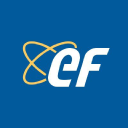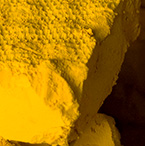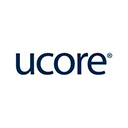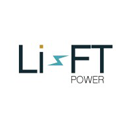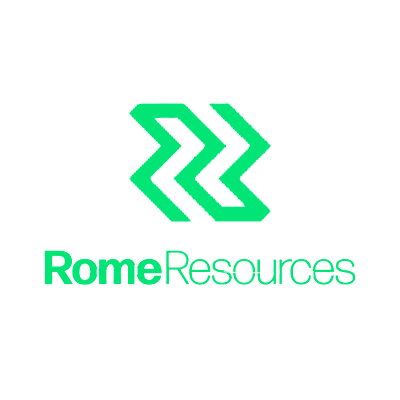Revolutionary Technologies Cut Battery Metals Capital Costs While Demand Surges 200% by 2030

Allied governments backing battery metals with price floors & investment as China restricts exports, creating opportunities for Western processors & miners.
- Western nations are fundamentally restructuring global battery metals supply chains by prioritizing strategic independence over cost optimization, driven by Chinese export restrictions and the need to secure critical materials for defense and clean energy applications.
- Government policy interventions including price floors and co-investment frameworks are creating unprecedented investment certainty by eliminating downside risks and providing strategic credibility for domestic processing capabilities in allied jurisdictions.
- Revolutionary processing technologies are transforming mining economics through superior capital efficiency, with new methods requiring 60-65% less capital investment than traditional approaches while delivering enhanced environmental performance and modular scalability.
- The sector is experiencing a strategic shift toward heavy rare earth specialization and polymetallic projects that can diversify commodity exposure while capturing premium pricing for Chinese-restricted materials essential to electric vehicle motors and defense systems.
- Indigenous partnerships and ESG excellence are becoming critical competitive advantages, with equity participation models reducing regulatory risks while environmental innovations like carbon sequestration create additional revenue streams that address institutional screening requirements.
The global battery metals sector continues an undergoing fundamental transformation as Western nations prioritize supply chain independence over cost optimization, creating compelling investment opportunities across rare earths, lithium, and nickel development companies. Recent geopolitical tensions and Chinese export restrictions have accelerated government support for domestic processing capabilities, while technological innovations and strategic partnerships are reshaping traditional mining economics.
Breaking China's Critical Mineral Dominance
The rare earth elements sector represents the most strategically important battleground in U.S.-China competition, with implications extending far beyond commodity markets. China's decades-long investment in rare earth processing infrastructure created a near-monopoly that Western governments are now addressing through unprecedented investment and policy support.
Ucore Rare Metals exemplifies this strategic shift, positioning itself to challenge China's overwhelming dominance in rare earth processing and refining. As Chairman and CEO Pat Ryan explains,
"We're bringing the mid-market of the rare earth stream, the supply chain, and making sure that those building blocks of technology - light and rare earth oxides that connect the mine upstream, the magnet makers, the metal alloy makers downstream, are in good form. We work on that refining and processing that's currently 95% controlled by China."
This concentration of processing capabilities has created vulnerabilities that extend beyond simple supply chain disruptions. Recent Chinese restrictions on critical rare earth materials and reports of authorities confiscating passports of individuals with rare earth processing expertise underscore the urgency of developing Western alternatives.
Energy Fuels operates the White Mesa Mill, the only licensed rare earth processor in the United States, providing unique infrastructure advantages in the domestic market. The facility processes feedstock from multiple international sources, including projects in Australia, Brazil, and Madagascar. Chief Executive Officer Mark Chalmers emphasizes the operational reality:
"We are doing more than others right now. You can see the neodymium-praseodymium, the bags of separated oxides, and the bags of monazite. You can see it and you can track it right on through a plant."
Interview with Mark Chalmers, CEO of Energy Fuels
Government Policy Creates Investment Certainty
Allied governments are implementing policy frameworks that fundamentally alter investment economics through price floors and strategic procurement mechanisms. The United States Department of Defense established a $110 per kilogram neodymium-praseodymium price floor in July 2025, creating investment certainty previously absent from the sector. This policy intervention removes downside price risk for rare earth producers operating within allied frameworks. Energy Fuels' Mark Chalmers highlights the strategic significance:
"When there's a shortage of these products and you've got a country like China imposing restrictions on those products and those are required for the highest efficiency electric motor. You need those materials."
Ucore's technology has received significant validation through multiple U.S. Department of Defense programs. The company initially won a competitive contract worth $4 million to demonstrate technological advantages over traditional processing methods, leading to a subsequent $18.4 million grant for commercial deployment.
Ucore Rare Metals Chairman and CEO Pat Ryan states,
"The US Department of Defense had a bid that came out and said, 'We're looking for the most advantageous technology that can take on the legacy solvent extraction. And they put a bid out and Ucore Rare Metals won that bid."
The DoD's interest extends beyond technology validation, recognizing the strategic importance of heavy rare earth processing capabilities for materials China has restricted. The DoD actually wants the heavies as Ryan notes, referring to elements like dysprosium and terbium critical for defense applications.
Interview with Pat Ryan, CEO of Ucore Rare Earths
Technological Innovation Drives Capital Efficiency
Revolutionary processing technologies are transforming mining economics through superior capital efficiency and environmental performance. Ucore's proprietary RapidSX system represents a significant departure from traditional solvent extraction methods, utilizing column-based processing instead of massive mixer-settler systems typical of Chinese facilities.
"With RapidSX, you use a column based technology. It's one-third of the space. It's a closed system. It's not open to the environment the way a solvent extraction plant is," Ryan describes.
This closed-system approach offers significant environmental and operational advantages while requiring just $65 million capital investment compared to $300 million for equivalent solvent extraction plants. Rather than requiring massive upfront investments in inflexible infrastructure, the modular design allows incremental capacity additions. Ryan outlines their approach:
"Rather than turning on a 5,000 ton per annum solvent extraction plant and saying let's hope the market shows up, if you can do it in smaller increments and turn on and run for 3 weeks, 4 weeks and produce dysprosium and then turn your system on, perhaps bring a different feedstock in, and run for three or four weeks on a parallel line and produce samarium."
Solidifying Supply Chain Position
Canada Nickel's In-Process Tailings Carbonation technology demonstrates how environmental innovation creates competitive advantages. Pilot testing confirmed the technology's capacity to permanently store up to 1.5 million tonnes of CO₂ annually, positioning the Crawford site as one of North America's largest proposed carbon sinks. This capability addresses mining industry emissions reduction needs while creating potential carbon credit revenue streams.
Rome Resources' encouraging drilling results with XRF analysis reporting maximum grades of 2.4% tin and 13% copper at Mont Agoma prospect illustrate how polymetallic projects can diversify commodity exposure while leveraging shared infrastructure. The multi-commodity nature of Mont Agoma, principally containing tin, copper, zinc, and silver, supports optimized revenue streams through metallurgical testing currently underway.
The timing aligns with rapidly growing demand across multiple sectors. Ucore Metals' Ryan notes that permanent magnet demand is projected to grow 200% by decade's end, driven not just by electric vehicles and renewable energy, but increasingly by emerging technologies:
"As you look at 2035, and some of your other outlying industries, emerging industries like robotics, that'll probably be the largest user of rare permanent magnets. It won't be EV or renewable energy, it'll be robotics."
Lithium Strategic and Market Recovery
The lithium sector presents compelling contrarian investment opportunities as well-capitalized companies advance development activities while competitors retreat.
Li-FT Power invests $7 million in environmental baseline studies during market weakness while lithium prices have recently increased 30% from multi-year lows. CEO Francis MacDonald's decision to allocate substantial resources toward permitting activities reflects calculated positioning for market recovery.
MacDonald explained, emphasizing the rationale for immediate action despite challenging conditions:
"You need two years of baseline data before you can get into environmental assessment.
"Doing it in a consortium structure probably makes the most sense because these are pretty capital intensive projects, and as a small junior exploration company, it's probably not possible to do that all yourself."
The company strengthened leadership by appointing Anthony Peter Tse as chairman, bringing extensive lithium industry experience from Galaxy Resources' transformation into Arcadium, subsequently acquired by Rio Tinto for $6.7 billion. Tse's background in lithium is pretty extensive, having operated a spodumene mine and been involved in the downstream refining and conversion part add a new dimension to the management team as per MacDonald.
Li-FT Power's focus on Dense Media Separation technology represents a potentially significant competitive advantage, leveraging substantial density differences between spodumene and typical gangue minerals.
"You can put a heavy liquid in between and anything that's heavier than the liquid will sink. Anything that's lighter than the liquid will float."
The gravity-based approach operates at coarser particle sizes, reducing energy requirements compared to conventional flotation processing. Downstream integration opportunities add strategic value, particularly around Edmonton, Alberta, which offers compelling advantages for lithium processing facilities.
"Alberta has the cheapest natural gas in the world. The corporate tax rate is 8%. It's just incredible. If you could get something off the ground there, everything kind of makes sense."
Interview with Francis MacDonald, CEO of Li-FT Power
Market fundamentals support optimistic positioning despite recent volatility. MacDonald highlighted that electric vehicle sales increased 30% while battery storage applications grew 60%, driving overall lithium demand growth of approximately 20% annually.
"From a macro perspective, I'm just super excited for lithium, because sales were up 30% last year. Battery stationary storage was up about 60% last year and so lithium demand continues to grow about 20%." - Li-FT Power's CEO Francis MacDonald
Indigenous Partnerships and ESG Excellence
Environmental, social, and governance considerations increasingly influence institutional capital allocation, creating advantages for companies demonstrating superior stakeholder engagement and operational practices. Canada Nickel's approach represents a fundamental shift from traditional mining industry practices, with partnerships extending beyond consultation to equity ownership and operational control.
Canada Nickel secured Taykwa Tagamou Nation's $20 million investment, becoming the first Indigenous Nation in Canada to secure an equity stake in a critical minerals project of this magnitude. This investment grants the Nation director appointment rights, creating direct Indigenous representation in corporate governance.
"Indigenous partnerships and community stewardship are not a side project at Canada Nickel – they are embedded into how we operate," explained Pierre-Philippe Dupont, Vice President of Sustainability. "We are building more than a mine; we are helping build a resilient, low-carbon critical minerals corridor that reflects the values of the communities we work with."
The governance structure reflects evolving investor expectations around diversity and transparency. Canada Nickel achieved 33% female representation on the Board of Directors and 34% across the workforce, more than double the mining industry average. The company remains one of the only junior mining companies in Canada producing three consecutive ESG reports aligned with United Nations Global Compact standards.
Peak Rare Earths' development demonstrates how strategic partnerships facilitate regulatory approval while creating shared value. The company commenced land compensation payments following Tanzanian Government approval, with Minister for Minerals Hon. Anthony Mavunde visiting the Ngualla Project to commemorate the milestone. The structured approach to community engagement addresses critical risk factors for mining projects where Indigenous consent has become essential for regulatory approval.
Peak Rare Earths' proposed acquisition by Shenghe Resources values the company at approximately A$158 million reflects growing recognition that supply security justifies premium valuations over traditional cost-optimization models. Peak shareholders will receive A$0.359 per share in cash if the scheme is implemented, providing immediate liquidity while Shenghe gains control of the Ngualla Project's substantial rare earth resources.
The Investment Thesis for Battery Metals
- Government-Backed Revenue Certainty: U.S. Department of Defense price floors eliminate downside risk while allied government co-investment provides strategic credibility and financing support for Western jurisdiction producers
- Strategic Supply Chain Positioning: Companies controlling midstream processing infrastructure demonstrate significant barriers to entry and compressed development timelines versus greenfield competitors, particularly those with existing environmental permits
- Technological Differentiation: Revolutionary processing methods like RapidSX and Dense Media Separation offer 60-65% capital cost reductions compared to traditional approaches while providing superior environmental performance
- Heavy Rare Earth Specialization: Focus on dysprosium, terbium, and other Chinese-restricted materials offers differentiated positioning amid export controls and accelerating electric vehicle motor demand requiring heat-resistant permanent magnets
- Indigenous Partnership Models: Equity participation and operational partnerships reduce regulatory risks while creating aligned stakeholder interests, particularly critical for Canadian mining projects requiring Indigenous consent
- Contrarian Market Timing: Current lithium market weakness creates natural selection process, allowing well-capitalized companies to advance development at reduced costs while competitors exit or hibernate
- Carbon Credit Revenue Opportunities: Environmental technologies like tailings carbonation create additional revenue streams while addressing institutional ESG screening requirements
- Diversified Feedstock Security: Companies with multiple international supplier relationships across Brazil, Australia, and Western-friendly jurisdictions reduce single-source dependency while maintaining operational flexibility
- Self-Funding Expansion Capability: Established operations with current cash flow generation support continued investment without dilutive equity raises or debt financing, reducing execution risks
- Downstream Integration Potential: Vertical integration opportunities capture value across multiple supply chain stages while reducing counterparty risks, particularly in regions with favorable cost structures and existing chemical infrastructure
The convergence of strategic necessity, technological innovation, and government support creates a compelling macro environment for battery metals companies that can credibly challenge Chinese supply chain dominance. As geopolitical tensions intensify and demand growth accelerates across electric vehicles, renewable energy, and emerging technologies, companies positioned at the intersection of policy support, operational capability, and financial strength are best positioned to capture value from this structural market transition. The investment framework must now incorporate national policy alignment, strategic metals positioning, and ESG performance rather than relying solely on traditional commodity metrics, creating more stable long-term value propositions for investors willing to embrace this paradigm shift.
Analyst's Notes




Subscribe to Our Channel
Stay Informed










